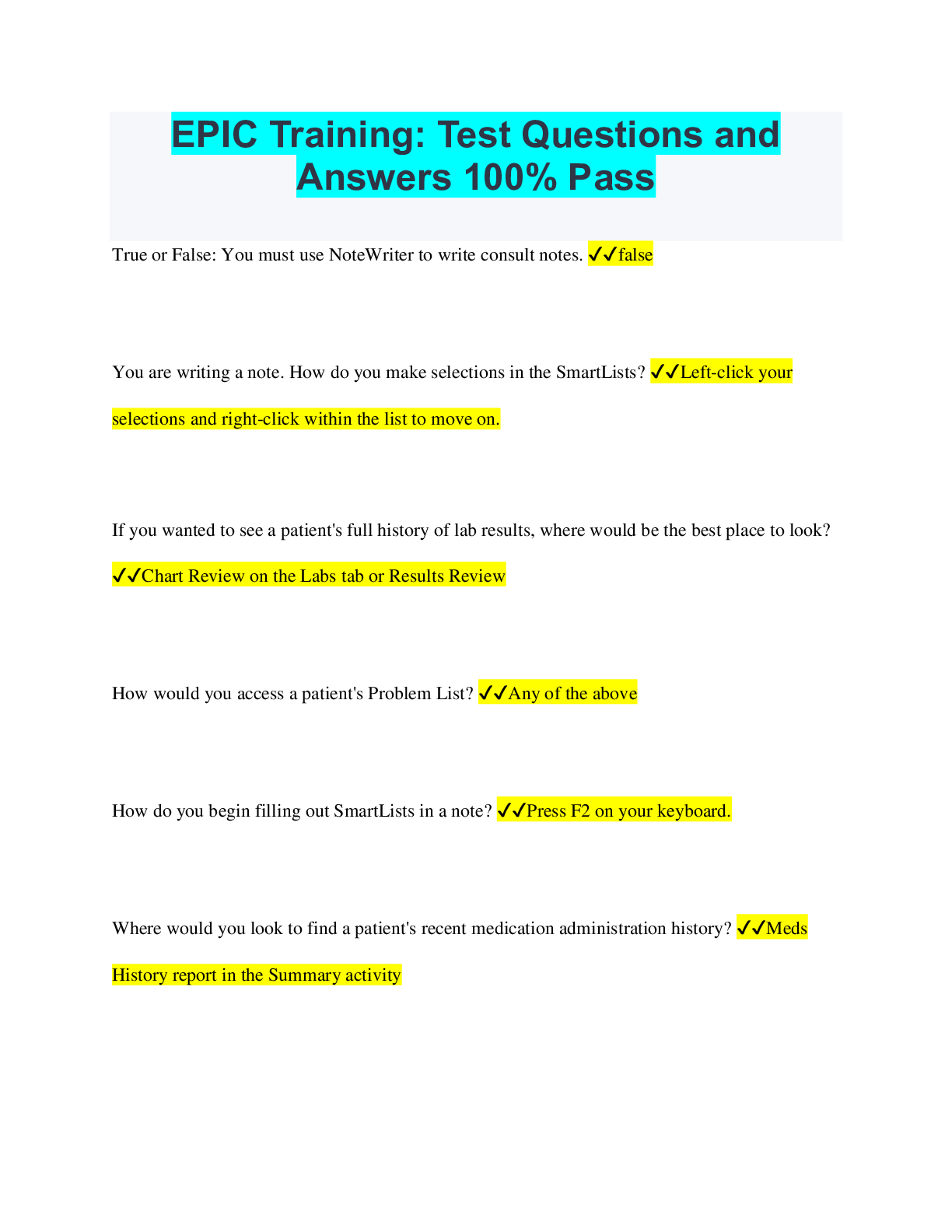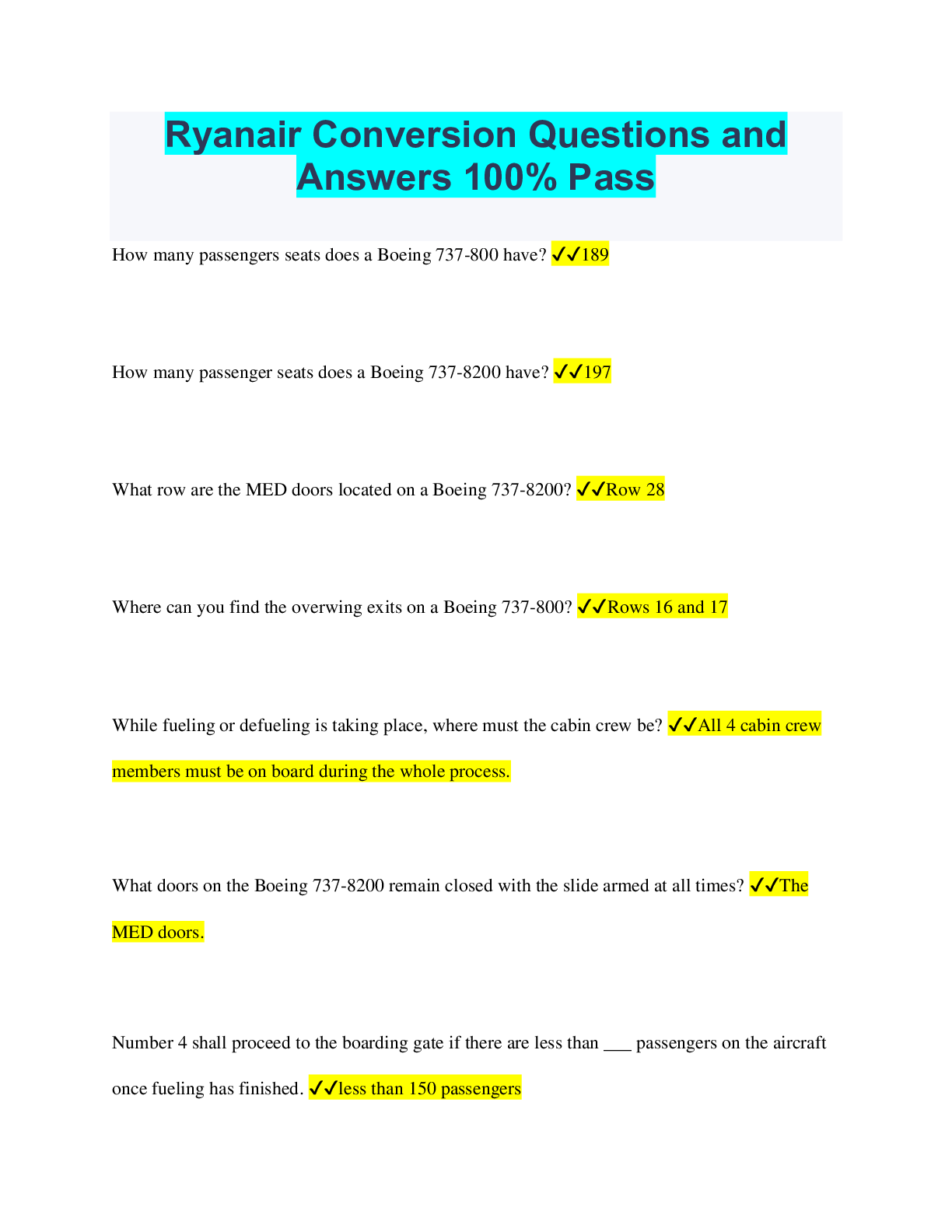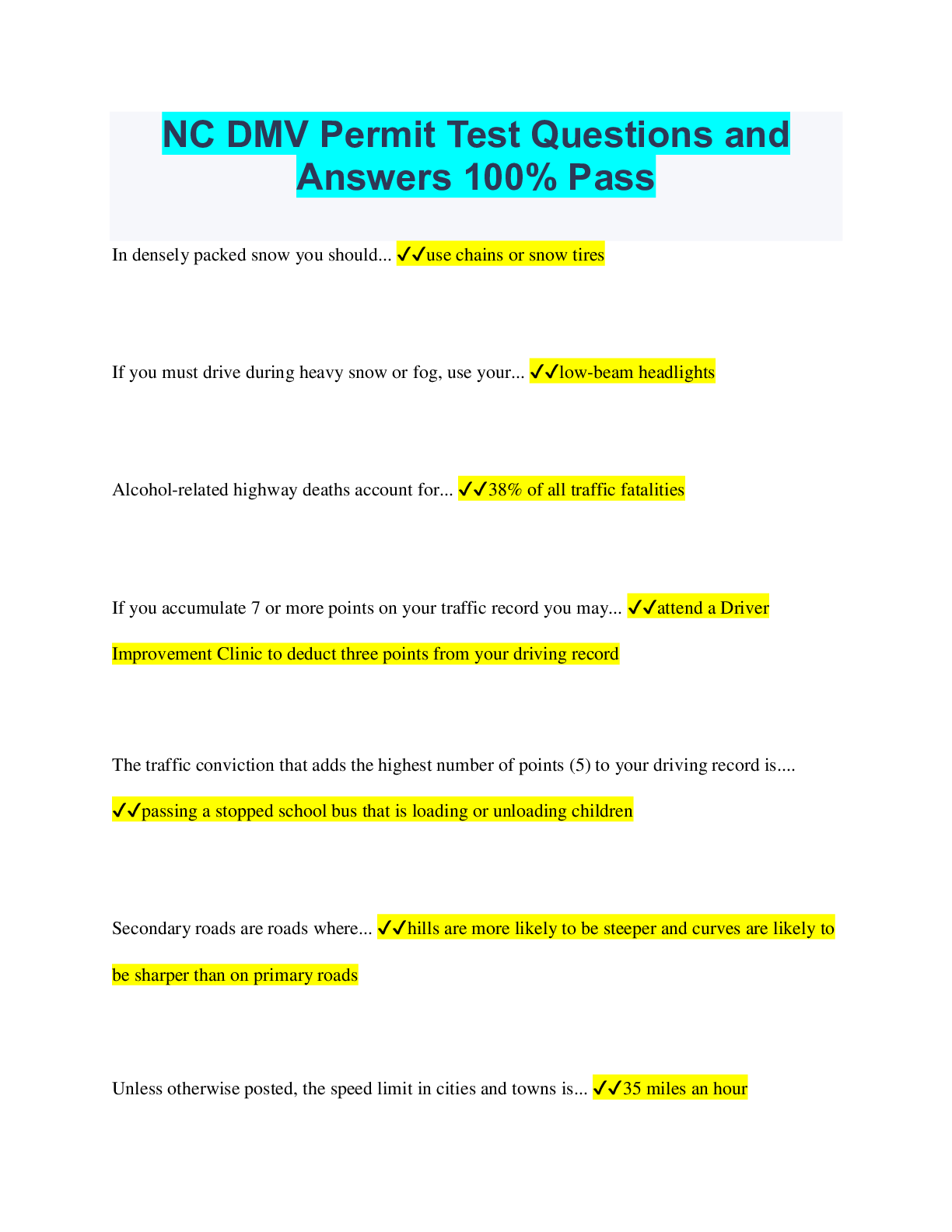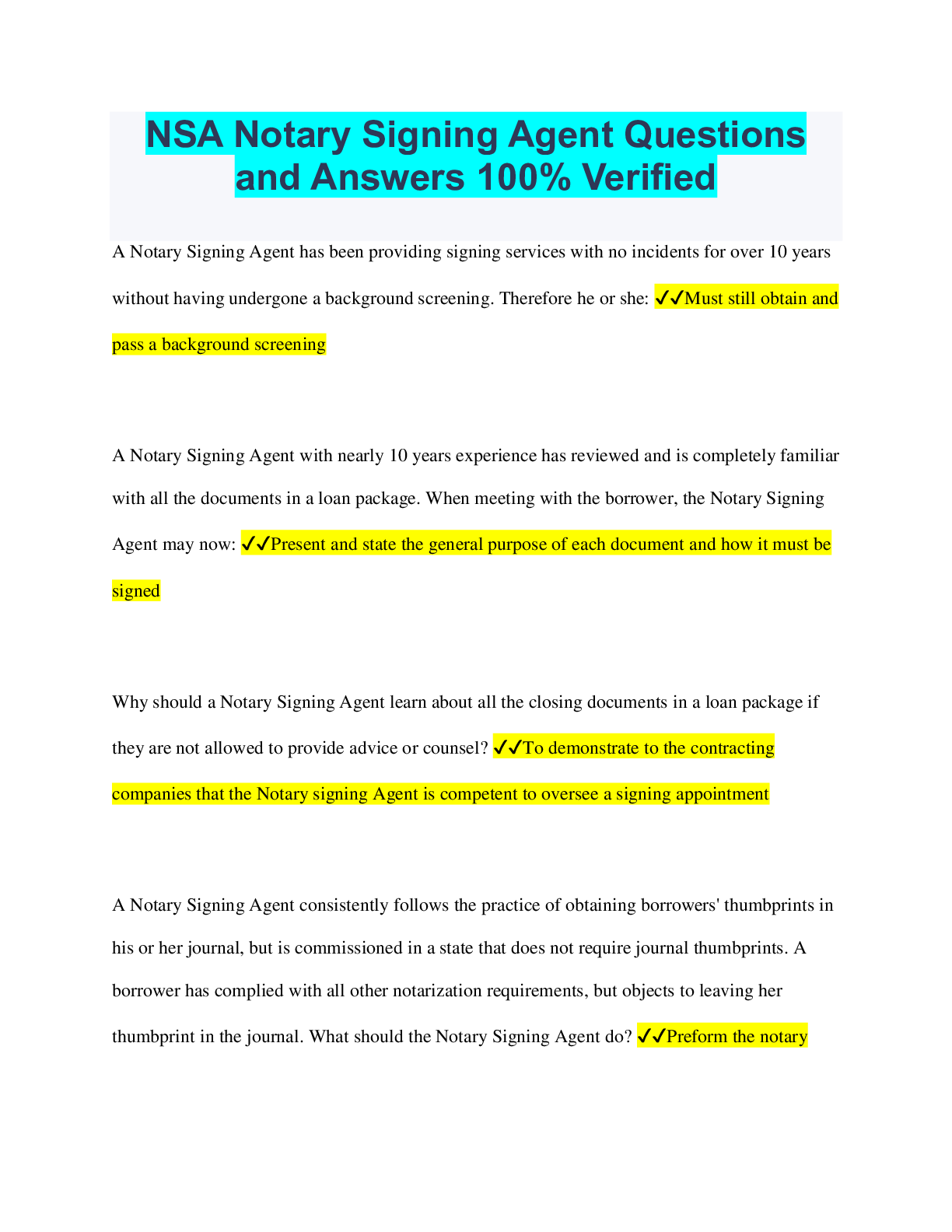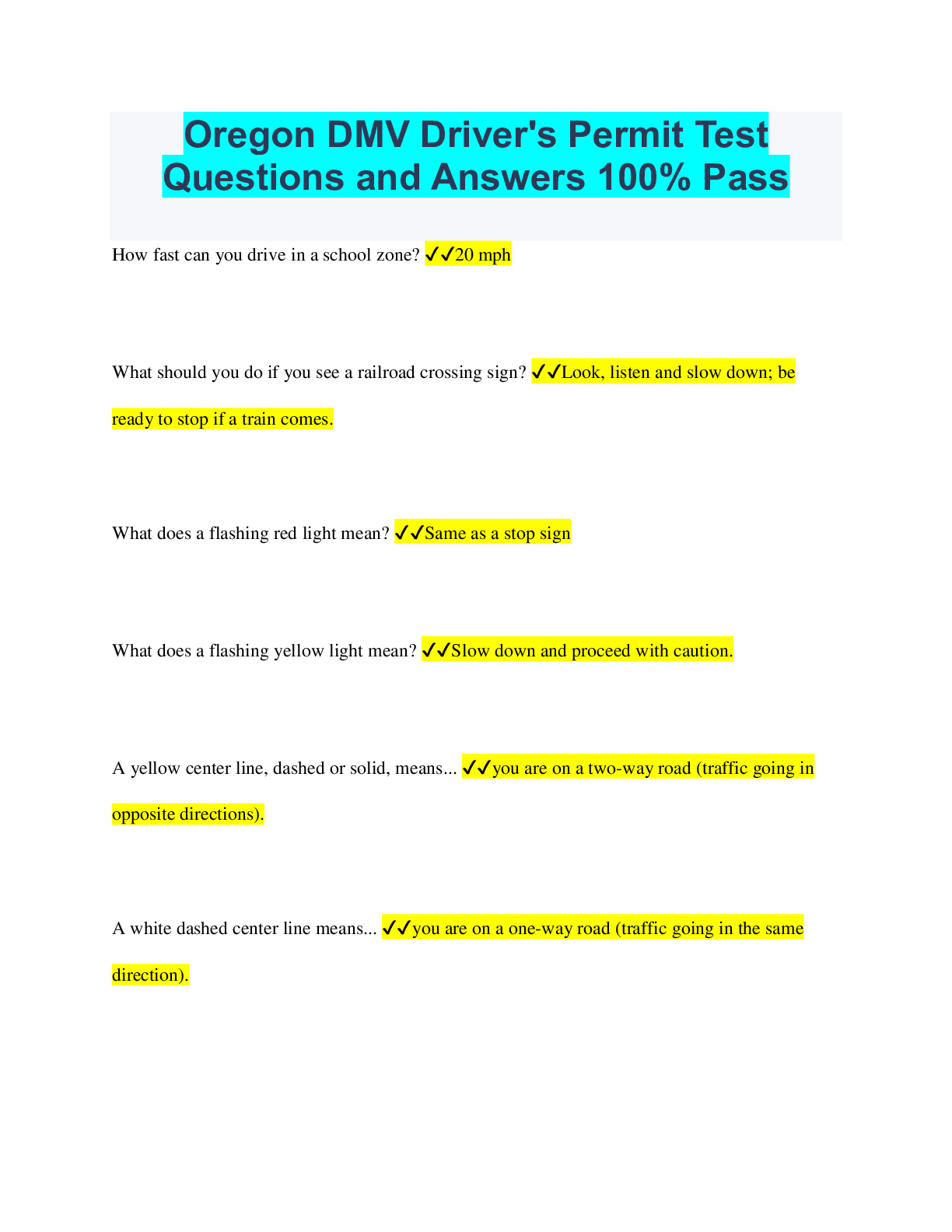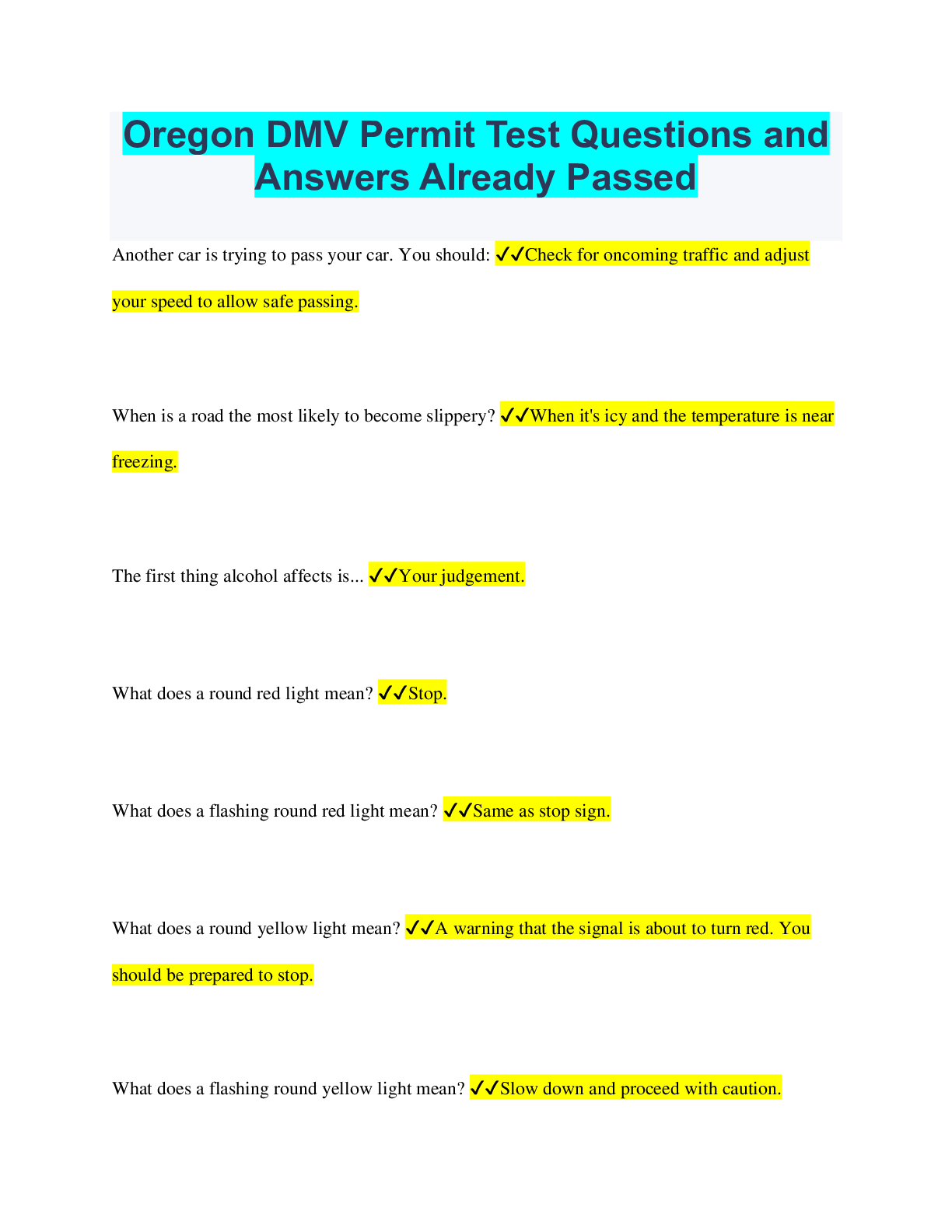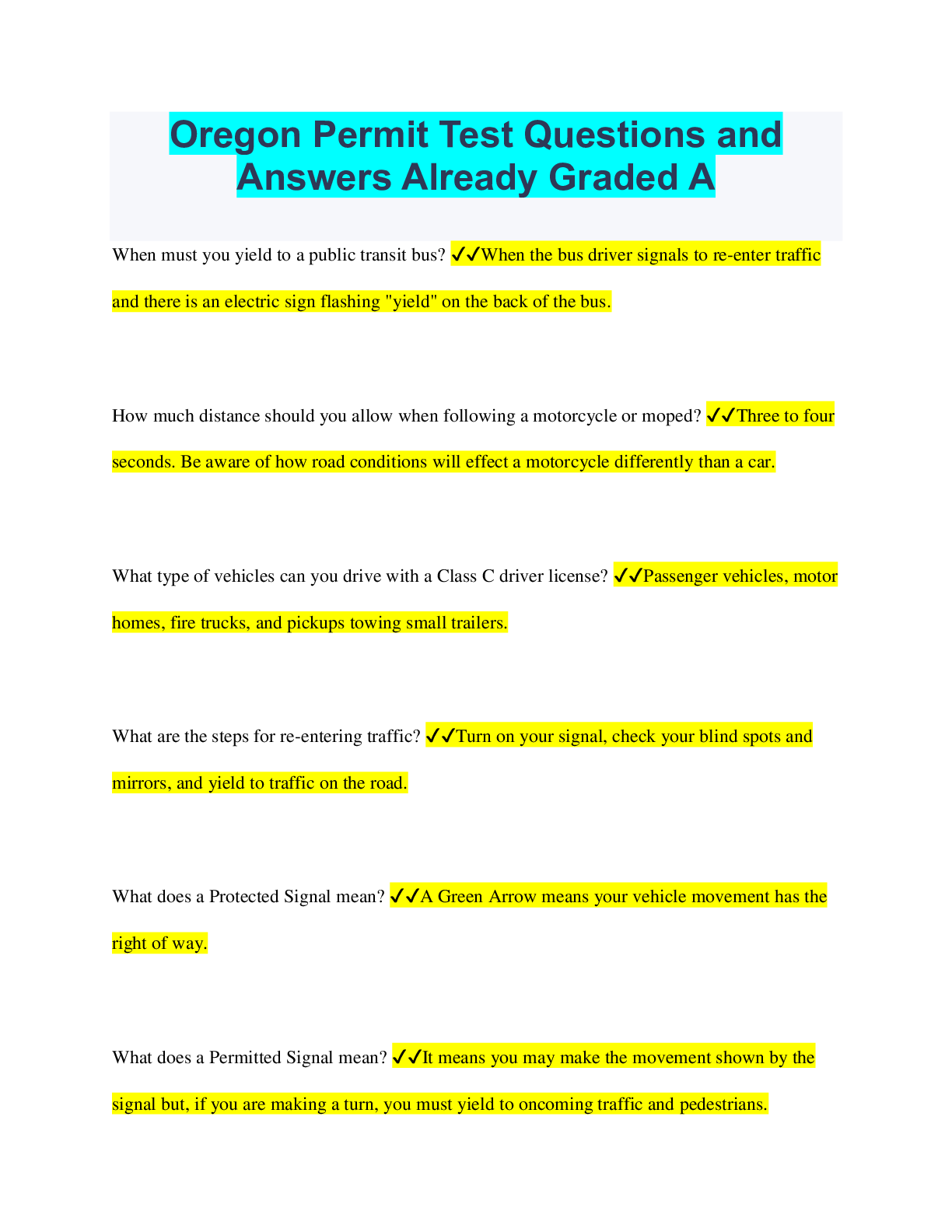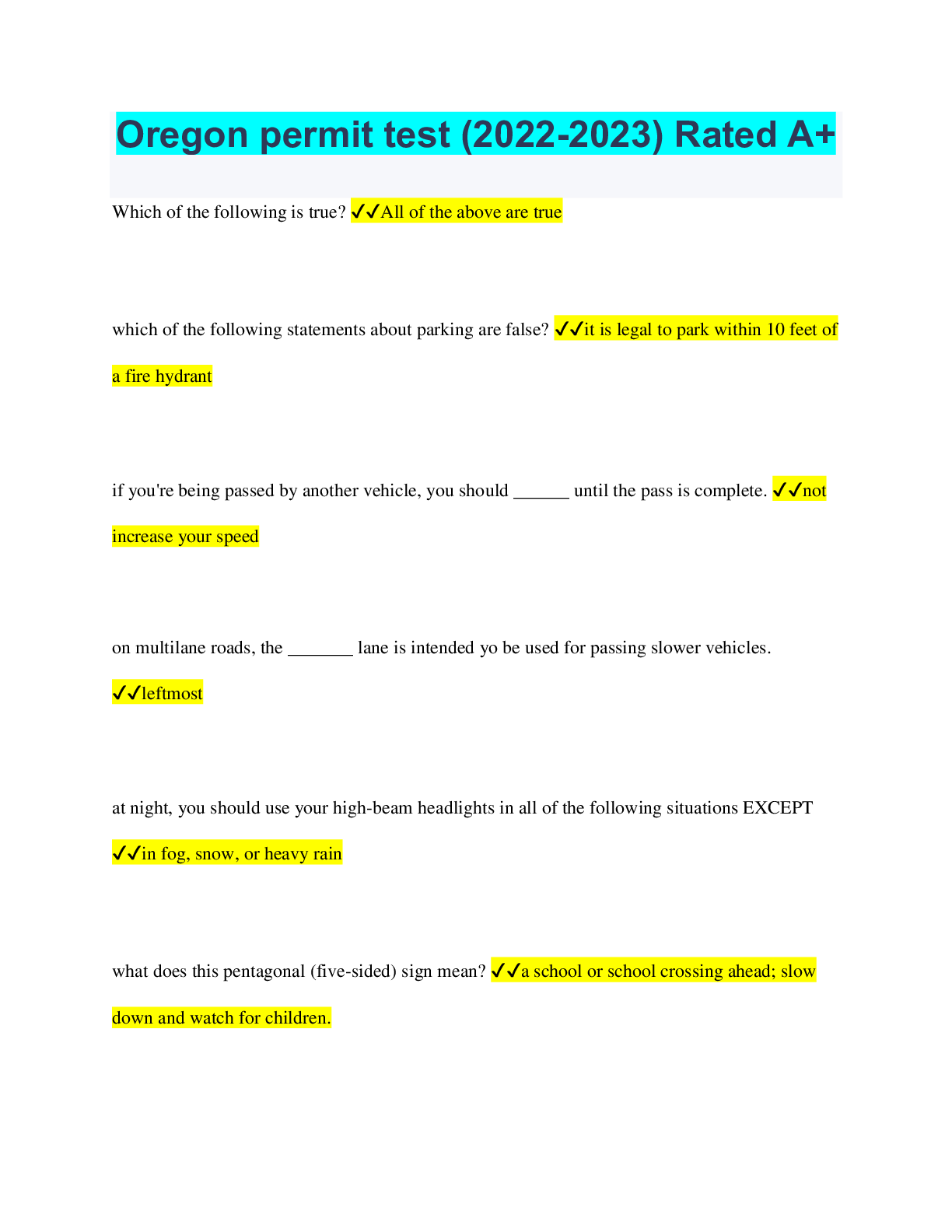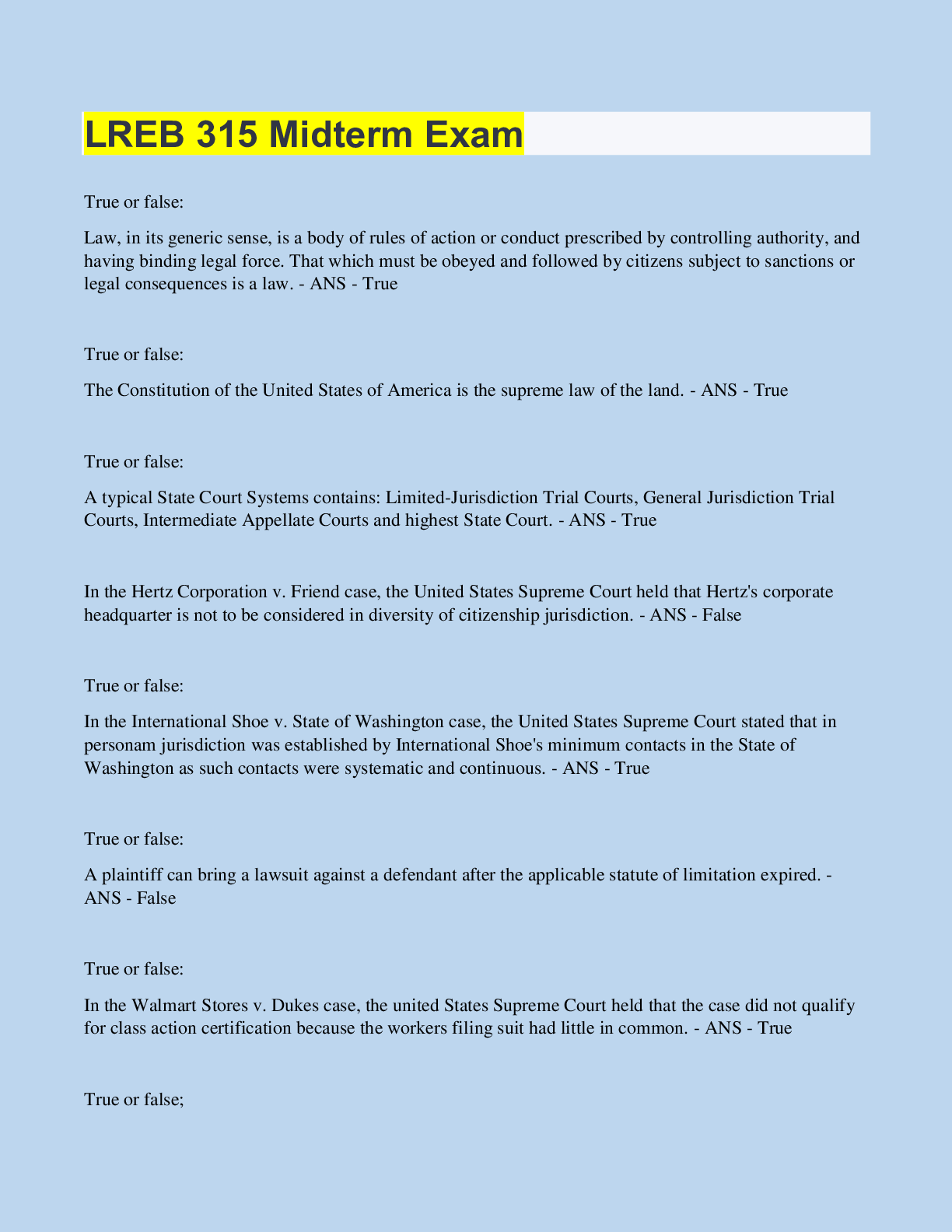Micro Biology > QUESTIONS & ANSWERS > Module 2- Microbiology Portage Learning Questions and Answers 100% Pass (All)
Module 2- Microbiology Portage Learning Questions and Answers 100% Pass
Document Content and Description Below
Module 2- Microbiology Portage Learning Questions and Answers 100% Pass cellular metabolism ✔✔a controlled set of biochemical reactions that occur in living organisms to maintain life Enzymes... ✔✔a protein, or group of proteins, that speed up (catalyze) chemical reactions Cofactors ✔✔a small chemical component, usually metal ions, that assist and regulate enzymes during the catalysis reactions. enzymes break down proteins into what: ✔✔amino acids enzymes break down lipids into what: ✔✔glycerrol/fatty acids enzymes break down polysaccharides into what: ✔✔monosaccharides Anabolism ✔✔the building up of macromolecules from smaller molecular units into larger complexes. Catabolism ✔✔Metabolic pathways that break down molecules, releasing energy. Phototrophs ✔✔organisms that get energy from photons of light to generate ATP from ADP Chemotrophs ✔✔organisms that obtain energy from chemicals found in the environment Organotrophs ✔✔chemotrophs that remove electrons from organic compounds (such as glucose) Lithotrophs ✔✔chemotrophs that remove electrons from inorganic molecules (such as elemental sulfur) Heterotrophs ✔✔a microorganism that cannot make its own food and must get carbon from organic molecules (ie. sugars) autotrophs ✔✔Organisms that make their own food and derive their carbon from inorganic molecules (most often CO2) Phosphorylation ✔✔The transfer of a phosphate group, usually from ATP, to a molecule. Nearly all cellular work depends on ATP energizing other molecules by phosphorylation. 3 Types of phosphorylation reaction that generates ATP: ✔✔1. Photophosphorylation - the use of light energy / 2. Substrate-level phosphorylation - the phosphoryl (PO3) group of a chemical compound is transferred and donated directly to ADP / 3. Oxidative phosphorylation - the energy released by the chemical oxidation of nutrients is used to reform ATP glucose metabolism ✔✔The process by which cells commonly obtain energy by breaking the chemical bonds of glucose molecules and use this energy to form ATP. Yields up to 38 ATP and involves three distinct transitions. steps of glucose catabolism ✔✔1. Glycolysis: the breakdown of glucose to pyruvate to yield energy. Yields 2 ATP 2. Either fermentation or respiration yields 2 additional molecules of ATP 3. Electron Transport Chain produces 34 ATP via an oxidative phosphorylation event at the plasma membrane Reactants ✔✔Any molecules present and involved at the beginning of a chemical reaction. Located to the left of the reaction arrow when written out. Glycolysis ✔✔The first step in releasing the energy of glucose, a single glucose molecule is broken down into two pyruvate molecules. As a result of this process, NADH and ATP are also produced. Can occur in the presence or absence of oxygen. fermentation (anaerobic respiration) ✔✔the breakdown of sugars without the use of oxygen, regenerate NAD+ so glycolysis can continue cellular respiration ✔✔Process that releases energy by breaking down glucose and other food molecules in the presence of oxygen Krebs Cycle (Citric Acid Cycle) ✔✔second stage of cellular respiration in eukaryotes, takes place in matrix of mitochondria, - Pyruvic acid combines with coenzyme A to form Acetyl-CoA which enters Krebs cycle - in matrix of mitochondria - each turn of Krebs cycle produces 1 molecule of ATP, 1 molecule of FADH2, and 3 molecules of NADH (multiply to 2 since there are two Pyruvates electron transport chain ✔✔third stage of cellular respiration NADH is oxidized to form NAD+ and FADH2 is oxidized to form FAD. As the electrons from these carriers move down the ETC, energy is released. This energy pumps H+ ions across the membrane, creating a proton gradient which is used for chemiosmosis and generates ATP. proton-motive force ✔✔The potential energy stored in the form of an electrochemical gradient, generated by the pumping of hydrogen ions across biological membranes during chemiosmosis. beta oxidation ✔✔A metabolic sequence that breaks fatty acids down in the cytosol in prokaryotes and in the mitochondria in eukaryotes to generate AcetylCoA, which enters the Krebs cycle. Photosynthesis ✔✔Conversion of light energy from the sun into chemical energy. Chloroplast ✔✔An organelle found in plant and algae cells where photosynthesis occurs Photophosphorylation ✔✔The light reaction of photosynthesis, and is the process of converting light energy into chemical energy to be used by the cell in the forms of ATP and NADPH., occurs in the membrane Calvin Cycle ✔✔the dark reaction of photosynthesis (light independant) and involves the ability of a microorganism to use the ATP and NADPH generated in the light reaction to convert CO2 and H2O into organic carbon compounds and useful carbohydrates, requires 6 turns to generate one molecule of glucose Substrate ✔✔The reactant on which an enzyme acts on. [Show More]
Last updated: 2 years ago
Preview 1 out of 7 pages
.png)
Buy this document to get the full access instantly
Instant Download Access after purchase
Buy NowInstant download
We Accept:

Also available in bundle (1)
.png)
PORTAGE LEARNING MICROBIOLOGY BUNDLED EXAMS QUESTIONS AND ANSWERS WITH VERIFIED SOLUTIONS
PORTAGE LEARNING MICROBIOLOGY BUNDLED EXAMS QUESTIONS AND ANSWERS WITH VERIFIED SOLUTIONS
By Nutmegs 2 years ago
$20
18
Reviews( 0 )
$8.00
Can't find what you want? Try our AI powered Search
Document information
Connected school, study & course
About the document
Uploaded On
Sep 23, 2022
Number of pages
7
Written in
Additional information
This document has been written for:
Uploaded
Sep 23, 2022
Downloads
0
Views
148

.png)


